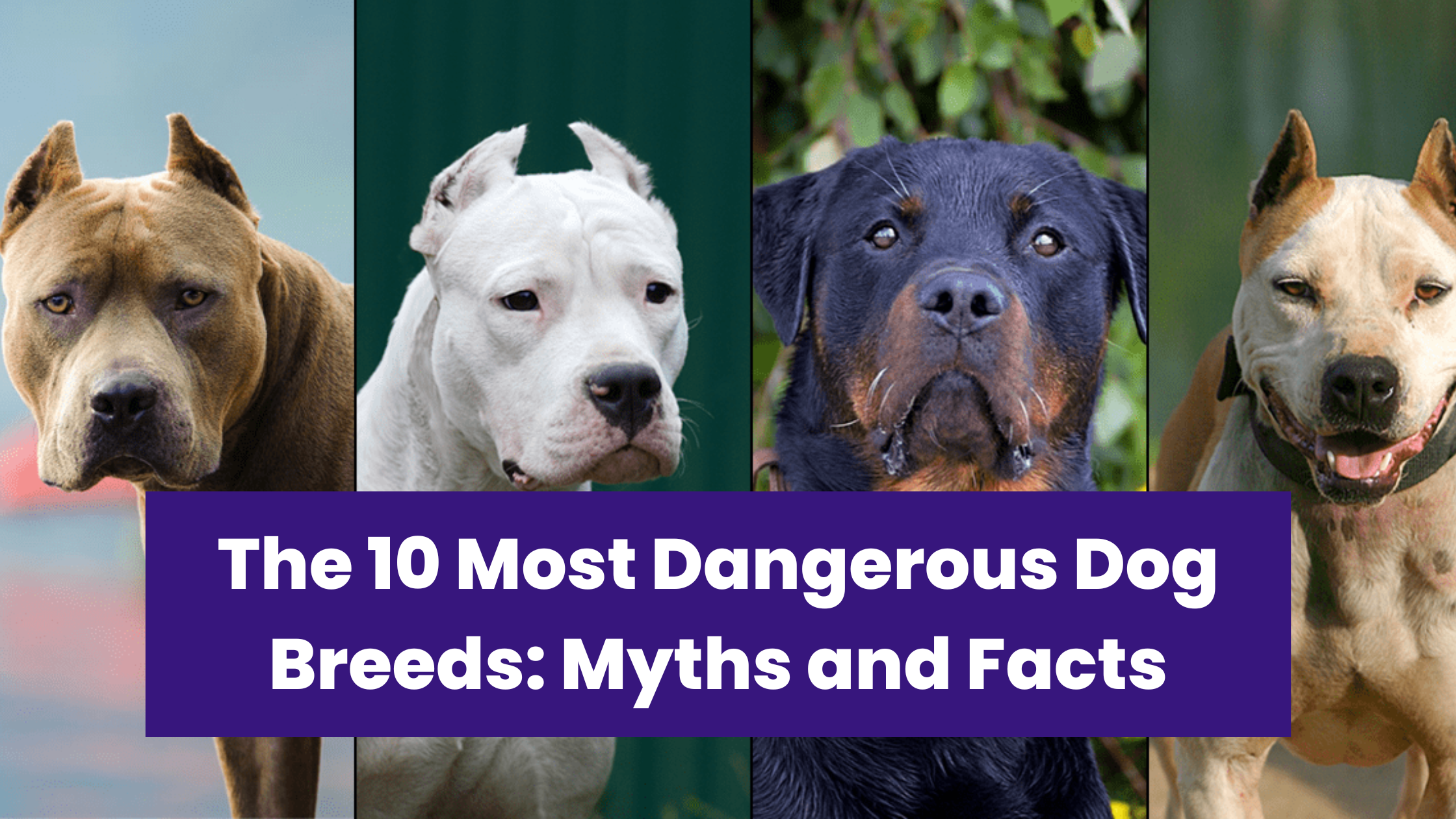Dogs are often referred to as “man’s best friend,” but not all breeds are the same in terms of behavior. Some dog breeds are considered more dangerous than others, based on research and statistics.
While any dog can bite and cause injury, certain dangerous dog breeds have a higher propensity to show aggressive behavior. These breeds are often labeled as the most dangerous dogs because they tend to be involved in more incidents of biting or attacking.
Aggression in dangerous dogs can occur for several reasons. Lack of proper training and socialization at an early age can result in behavioral problems. Dogs that don’t spend enough time with their owners or don’t receive sufficient attention are also more likely to become aggressive. Additionally, dogs that are not spayed or neutered tend to display more hostile behavior, making them very dangerous dogs in certain situations.
Sometimes dogs act aggressively when they feel sick, scared, or threatened. Therefore, it’s essential to be cautious around any dog, regardless of the breed. However, certain breeds, due to their temperament and strength, are statistically considered more dangerous dogs and responsible for more attacks and injuries.
It’s also important to be aware of things that can harm dogs, such as certain foods. For example, if you’re wondering “how much chocolate is dangerous for dogs,” the answer is that even small amounts can be harmful, depending on the dog’s size. Similarly, feeding dogs grapes or raisins can be toxic, as grapes are dangerous for dogs. Another lesser-known risk is avocado—if you’ve ever asked, “is avocado dangerous for dogs,” the answer is yes, as it contains substances that can be harmful.
For more information about dog breeds and behaviors, you can check Wikipedia’s list of dog breeds.
The Dark Side of Canines: 10 Breeds Known for Their Aggression
Here’s a list of commonly recognized dangerous dog breeds:
- American Pit Bull Terrier
- Rottweiler
- German Shepherd
- American Bulldog
- Doberman Pinscher
- Bullmastiff
- Siberian Husky
- Alaskan Malamute
- Dogo Argentino
- Chows
Read:
- Best Life Insurance Companies: Comprehensive Reviews & Rating
- The 20 Most Popular Cryptocurrencies of 2024: Trends and Insights
- Best Crypto Exchanges and Apps for October 2024
#1 The American Pit Bull Terrier: One of the Most Dangerous Dog Breeds
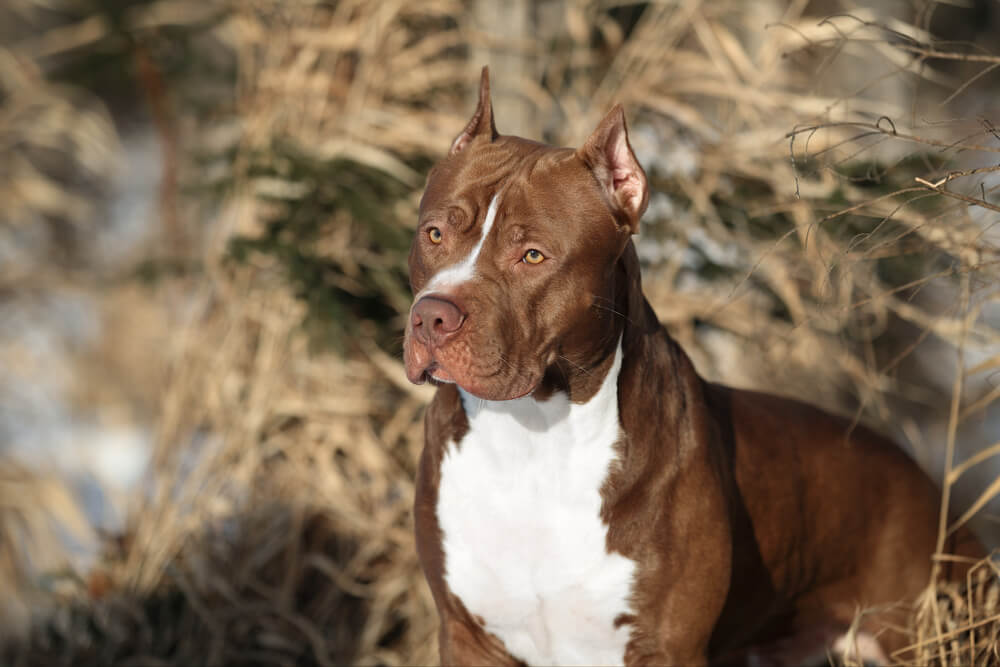
The American Pit Bull Terrier is often regarded as one of the most dangerous dog breeds, both in the United States and around the world. This breed is known for its aggressive tendencies and has been involved in serious attacks on people. With their strength and determination, these dogs can easily overpower anyone who threatens them.
Bully breeds, which include the American Staffordshire Terrier, have had a long-standing reputation for unpredictability. This stereotype is largely fueled by media portrayals and public fear, which often highlight the aggressive behavior associated with these dogs.
Statistics reveal that Pit Bulls make up about 6% of the dog population in the U.S., yet they are responsible for a staggering 68% of dog bites since 1982. The Centers for Disease Control and Prevention (CDC) supports these findings, noting that Pit Bulls are linked to more fatalities than any other dog breed.
A significant concern is that children are often the victims of attacks. According to a report from the American Animal Hospital Association, Pit Bulls are responsible for 22.5% of dog bites, followed by mixed breeds and German Shepherds. Although Pit Bulls have the highest bite risk and tend to cause the most severe injuries, other breeds, like the Akita, have a lower incidence of bites but can inflict considerable damage.
Unfortunately, many breeds are often grouped with Pit Bull terriers in bite statistics, which can skew the overall data. While Pit Bulls can indeed be powerful and dangerous animals, they can also be loving and loyal companions when trained and socialized properly.
The issue arises from how dog bite data is collected and reported. Many incidents labeled as “Pit Bull attacks” may not involve purebred Pit Bulls at all. This misidentification can lead to an unfair overrepresentation of Pit Bulls in statistics, perpetuating the myth that they are inherently dangerous.
Despite the complexities surrounding the data, it’s important to acknowledge that Pit Bulls do contribute to serious dog bite incidents. Understanding the factors that lead to aggression in all dogs, including the most dangerous dog breeds, can help in preventing attacks and promoting responsible ownership.
Read :
- Top 10 Blockchain Platforms You Need To Know About
- Rhode Island’s Top 24 Blockchain Technology Enterprises
- Top 22 auto insurance companies in California 2024
- 10 cheapest cars to insure 2024
- 11+ Australia’s Best Car Insurance companies 2024
#2. Rottweilers: Understanding Their Nature and Risks
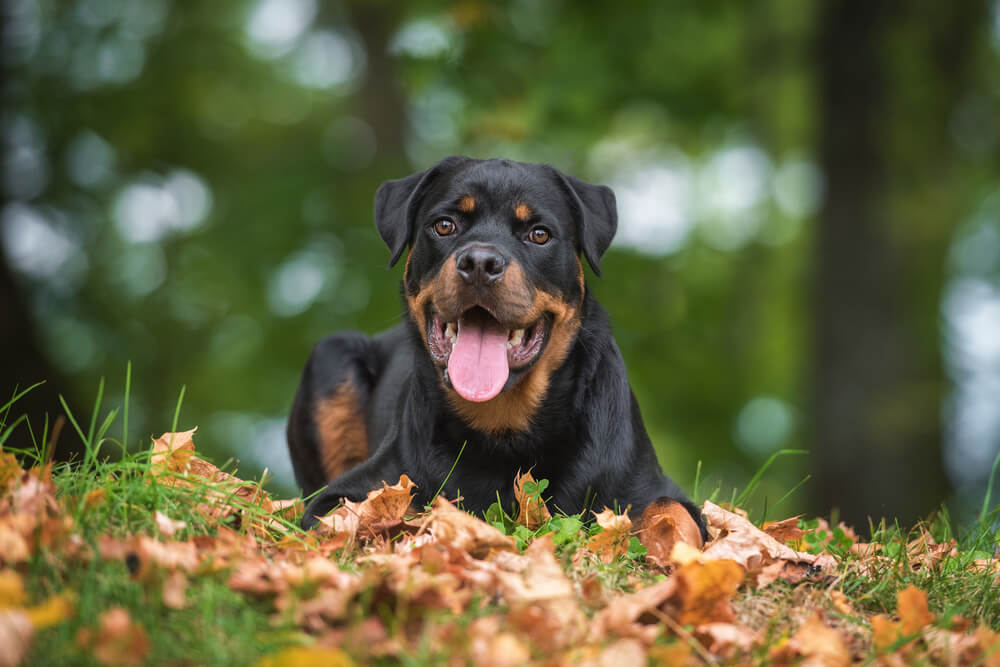
Rottweilers are large, powerful dogs known for their strong bite, which can cause serious injuries or even death. Their natural aggression and territorial instincts make them a significant threat to both people and other animals.
In several countries, including Ireland, Portugal, and Poland, laws prohibit the ownership of Rottweilers due to their potential dangers. Originally bred in Germany as watchdogs, Rottweilers are protective and fiercely loyal to their owners. However, this loyalty can turn aggressive if they perceive an outsider—be it a person or another animal—as a threat, increasing the risk of a dog bite attack.
According to a study by the Centers for Disease Control and Prevention (CDC), Rottweilers were responsible for 29 human fatalities over the past two decades, ranking them as the second most dangerous dog breed.
While Rottweilers have a reputation for aggression, their instincts to guard and protect their family make them excellent candidates for home security. They are known for their unwavering loyalty and dedication to their owners, willing to do whatever it takes to keep their loved ones safe.
In addition to their physical strength, Rottweilers are highly intelligent and trainable. This makes them ideal for security training, as they can quickly learn commands and effectively respond to potential threats. With proper training and socialization, Rottweilers can become reliable and trustworthy security dogs.
However, it is unfortunate that many owners train their Rottweilers to be aggressive guard dogs, which can lead to attacks and injuries. Responsible ownership, combined with appropriate training, is crucial in ensuring that Rottweilers are well-behaved companions rather than dangerous animals.
#3. German Shepherds: Popular Yet Potentially Dangerous Dogs
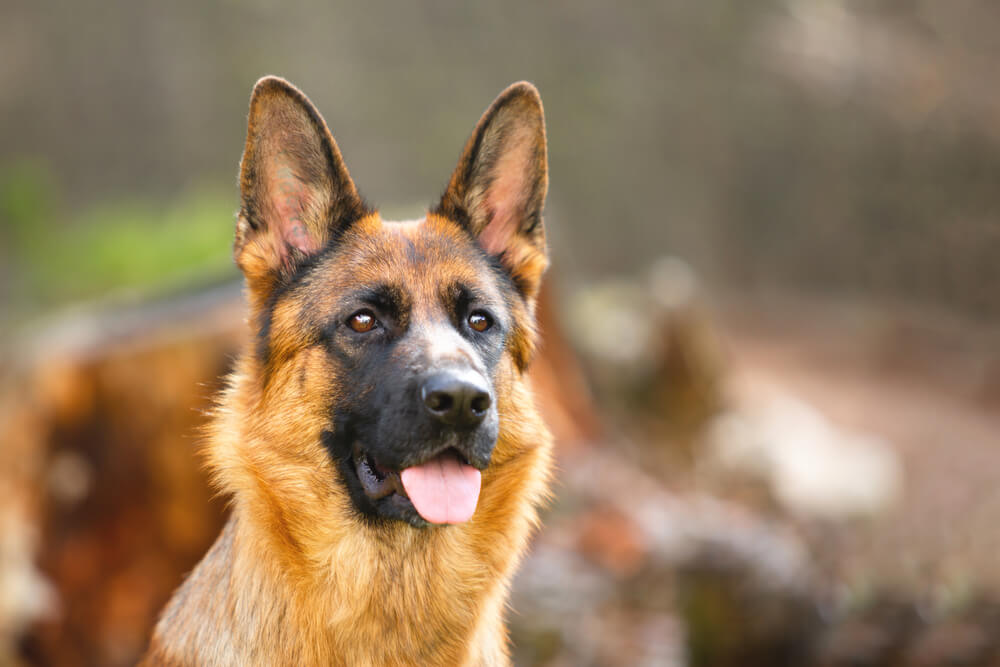
German Shepherds rank among the most popular dog breeds in the world, but they are also considered one of the most dangerous dogs. Originally bred for herding and guarding sheep, these strong and energetic dogs are now frequently used as police dogs, guard dogs, and service animals.
As large, powerful dogs, German Shepherds can become aggressive if they are not properly trained and socialized. While the bite of a smaller dog, like a Chihuahua, can cause damage, it does not compare to the serious potential of a German Shepherd’s bite.
The bite strength of a German Shepherd is significant enough to break bones or rupture blood vessels, leading to severe injuries. Their possessive and territorial nature can trigger an attack if they feel someone is invading their space or if they encounter unwelcome guests.
To help ensure that German Shepherds are more compliant, owners should begin training when the dog is still a puppy. Early training is crucial for developing good behavior. Socialization plays a vital role in a dog’s training; a well-socialized German Shepherd will feel less threatened and, as a result, be less dangerous.
It’s also important to recognize that older German Shepherds may exhibit increased aggression due to age-related issues. If they are in pain or discomfort, they are more likely to become irritable and may bite out of fear or distress.
German Shepherd owners should invest time and effort in training their dogs from an early age. This includes basic obedience training, socialization, and addressing any behavioral concerns. By providing proper guidance, German Shepherds can develop into well-balanced, obedient pets. A well-trained German Shepherd is not only a joy to have but also a safer companion for you and those around you.
Unfortunately, many owners do not realize the specialized training and socialization these dogs need to remain safe and non-reactive. Understanding their nature and requirements can help ensure that German Shepherds live up to their potential as loyal and dependable companions.
#4. Huskies: Intelligent, Independent, and Challenging to Train
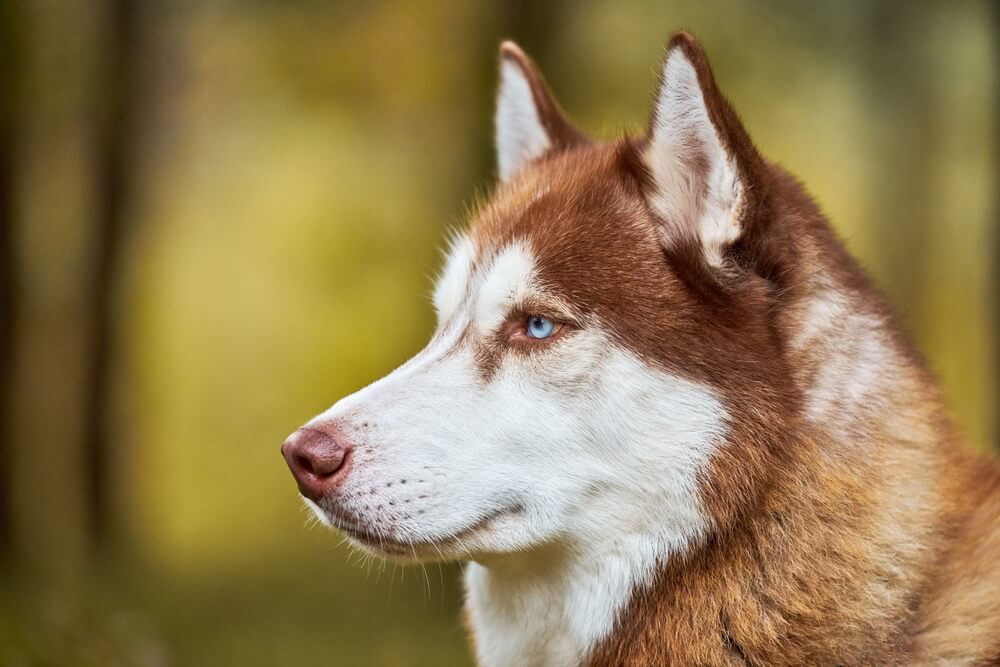
Huskies are known for their intelligence, but that also makes them quite difficult to train. This is why it’s essential for owners to begin obedience training while their Husky is still young. Early training helps manage their strong-willed nature and makes them more responsive to commands as they grow.
Although the CDC reports that Huskies are not a major public health threat, their large size and high energy can lead to injuries. On average, Huskies are responsible for about one fatality annually, and their powerful build does not make them the most kid-friendly dogs. Their strength and lively demeanor can sometimes be overwhelming, especially in homes with young children.
One of the most distinctive traits of Huskies is their independent, adventurous spirit. This can pose challenges, especially for new or inexperienced dog owners. Huskies love to explore and have a natural instinct for adventure, which often leads them to escape from backyards or homes. This desire to roam can put them in risky situations, such as running into traffic or becoming lost in unfamiliar areas. When Huskies manage to escape, the chances of a bite or other aggressive behavior also increase.
To prevent these issues, Husky owners must ensure that their environment is secure and escape-proof. Investing in a sturdy, high-quality fence and regularly checking it for vulnerabilities is crucial. Additionally, providing your Husky with plenty of physical exercise and mental stimulation can reduce their boredom and curb their instinct to escape. Engaging activities, such as daily walks, puzzle toys, or even dog sports, can make a significant difference in keeping them happy and engaged.
Understanding the Husky’s unique personality can lead to a rewarding companionship—if you’re up for the challenge, they can become devoted, energetic partners in both adventure and daily life.
#5. Wolf Hybrids: Beautiful but Potentially Dangerous Companions
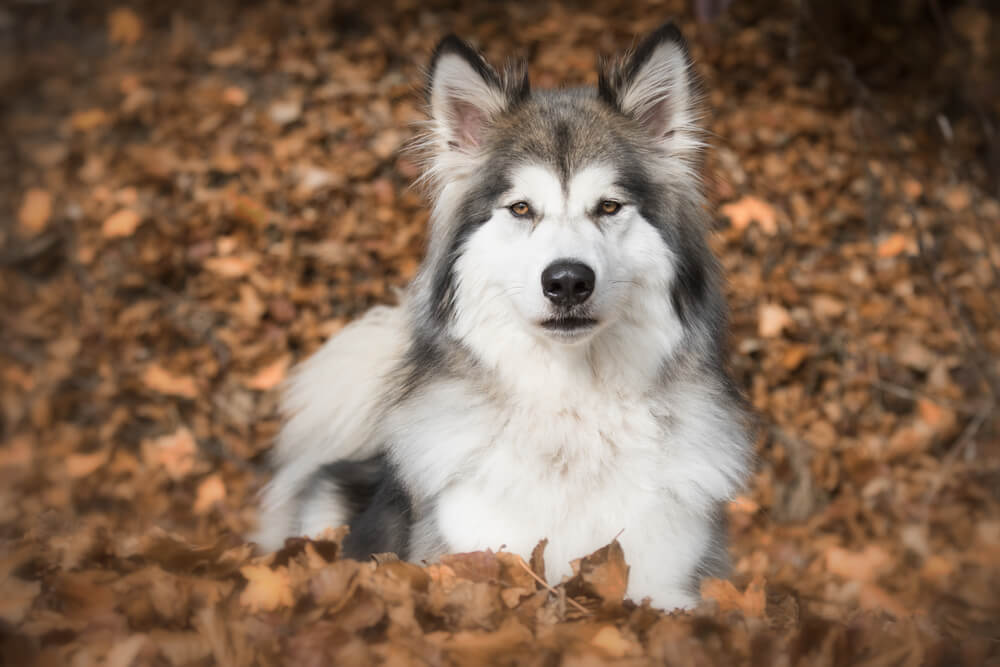
Many people view wolves as fierce and dangerous creatures, but did you know that wolf hybrids exist? A wolf hybrid is a mix between a domestic dog and a wild wolf. While they may appear as adorable, cuddly dogs, they can also pose serious risks.
What makes wolf hybrids potentially harmful is their challenging nature when it comes to training and control. This can make them dangerous companions, especially around children. Their partially wild instincts make them harder to manage and less predictable than typical domestic dogs.
If wolf hybrids escape from their property, they can be difficult to catch due to their wild ancestry. Any animal that is not fully domesticated can be a potential threat to humans and other pets.
It’s also important to clarify some myths and facts surrounding these animals. For instance, it’s a common misconception that wolf hybrids make good guard dogs. Wolves are naturally shy, which means these hybrids usually do not excel in protective roles. Their aggression often arises from fear, making their behavior unpredictable and hard to control.
Additionally, wolf hybrids are more susceptible to infectious diseases, which can complicate the aftermath of a dog bite. Concerns have also been raised about the effectiveness of certain dog vaccines for wolf hybrids, making their health management more complex.
Another myth is that a wolf hybrid is simply a Malamute or Husky. In reality, Malamutes and Huskies are distinct dog breeds and should not be confused with wolf hybrids.
In some regions, there are legal restrictions on owning wolf hybrids due to concerns about public safety. It’s crucial for potential owners to research the laws and regulations in their area before considering bringing a wolf-dog into their home. They should ensure that ownership of a wolf hybrid is permitted in their residential community.
While it’s difficult to pinpoint the exact number of wolf hybrid owners, interest in this unique breed remains significant. However, owning a wolf-dog requires careful consideration of the challenges and legal implications involved. Consulting with a legal expert in animal law is advisable to ensure compliance with regulations and to prioritize the well-being of both the owner and the animal.
#6. Here’s a rewritten version of your article on Alaskan Malamutes:
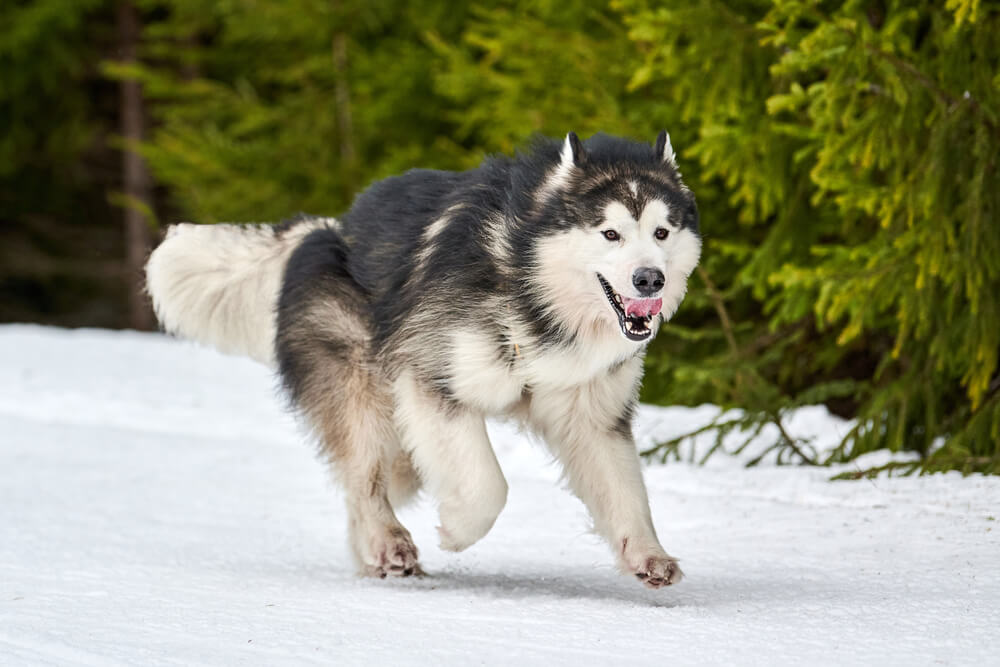
Alaskan Malamutes: Majestic Yet Potentially Dangerous
The Alaskan Malamute is a large breed originally bred for hunting and working in the Arctic. Known for their strength and power, these dogs can become dangerous if not properly trained and socialized. They are generally not recommended for first-time dog owners or families with small children.
If an Alaskan Malamute has experienced abuse or trauma, especially in a rescue shelter, it may exhibit more aggressive behavior. Therefore, early socialization and gentle handling are crucial in preventing aggression towards people.
Alaskan Malamutes are notable for their impressive size. Adult male Malamutes typically weigh between 75 to 100 pounds, while females usually range from 65 to 85 pounds. They are considered one of the largest dog breeds, standing at a height of 23 to 25 inches at the shoulder.
Their size extends beyond just weight and height. Alaskan Malamutes have a robust build, characterized by a broad chest and powerful limbs. These physical attributes make them well-suited for their original role as sled dogs, where their strength and endurance were tested in harsh Arctic conditions.
Owning an Alaskan Malamute requires commitment to training and socialization, along with an understanding of their unique needs. With the right care and attention, these majestic dogs can be wonderful companions, but they do demand respect and responsibility from their owners.
#7. Doberman Pinschers: Fearsome Protectors with a Strong Bite
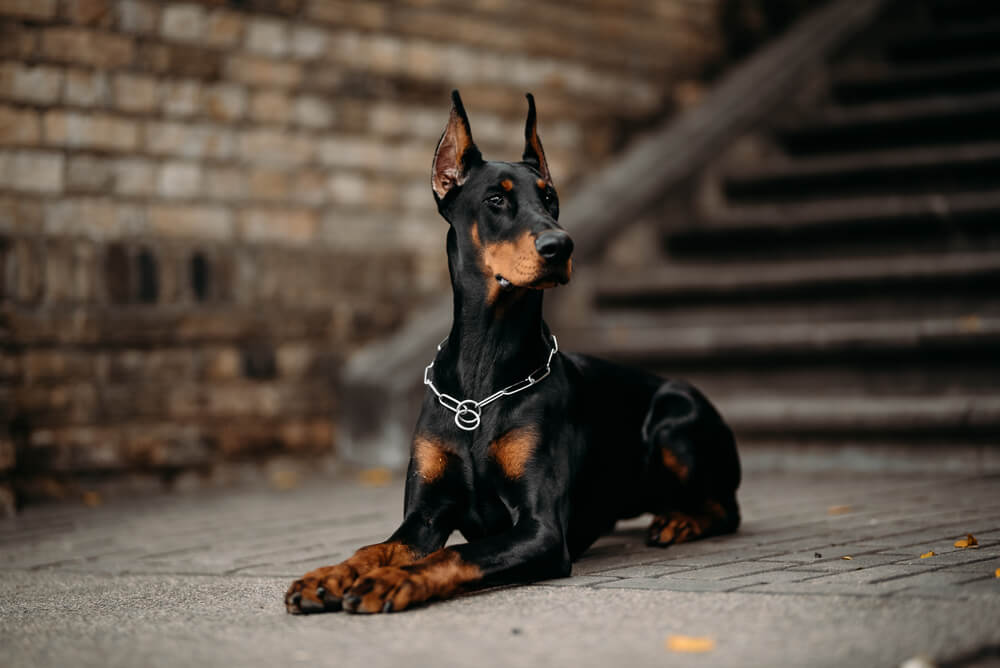
The Doberman Pinscher can indeed be an intimidating dog to own or encounter unexpectedly—similar to a surprise meeting with a grizzly bear in a remote forest. Known for its powerful bite, the Doberman has the strongest recorded bite force, delivering about 600 pounds of pressure, making it a formidable presence.
Being highly intelligent, Dobermans can be trained to be aggressive on command. Unfortunately, there have been tragic incidents involving these dogs. In 2001, a nine-year-old boy was killed by a Doberman Pinscher, and it was determined that the dog’s owner had been negligent, failing to supervise the animal properly and training it to exhibit aggressive behavior.
While not all Doberman Pinschers are aggressive, their strong protective instincts can sometimes lead to aggressive actions if they are not properly trained and socialized. This highlights the importance of seeking professional guidance when welcoming a Doberman into your home.
In recent years, several high-profile cases of Doberman bites have surfaced, reminding us of the significance of responsible ownership. By taking the necessary precautions and seeking expert advice, you can foster a safe and harmonious environment for both your Doberman and your family.
#8. Chow Chows: Deceptively Cuddly but Potentially Dangerous
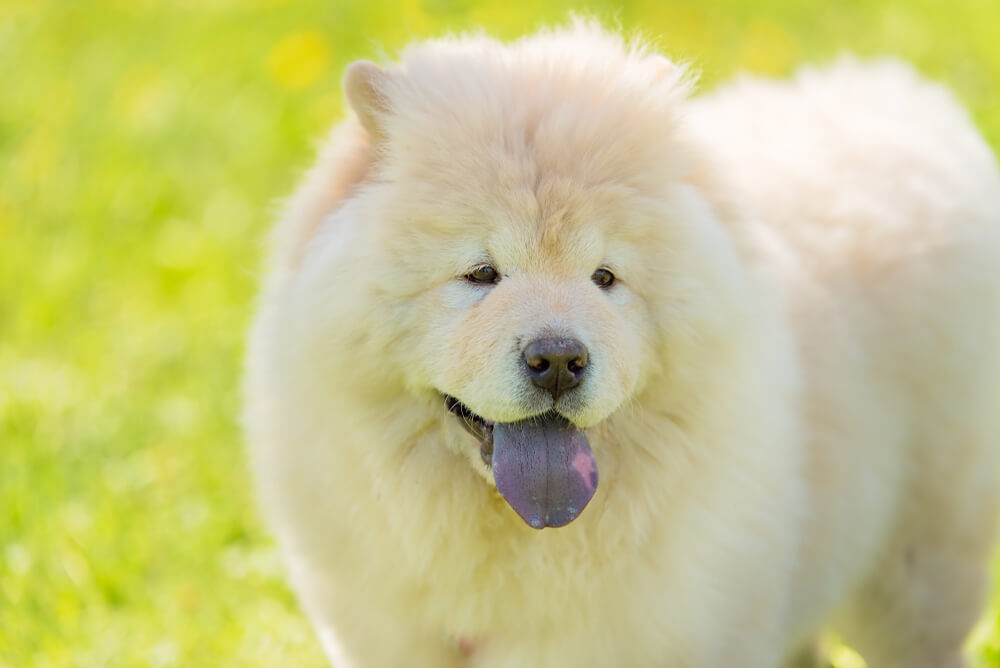
While the Chow Chow may look like a cuddly teddy bear, it has a reputation as an attack dog known for serious incidents involving both adults and children. The saying “looks can be deceiving” certainly applies here, as this breed was responsible for over 238 attacks between 1979 and 1998. Of these incidents, 40 resulted in fatalities, with 37 of the victims being children.
Originating from China, the Chow Chow is considered a high-risk pet. Weighing up to 70 pounds, this dog can be extremely dangerous if it feels provoked, scared, or threatened. Their unique appearance and fluffy coat may make them seem friendly, but it’s essential for potential owners to understand the serious responsibilities involved in owning such a powerful breed.
Given their history and potential for aggression, it’s crucial for Chow Chow owners to provide proper training and socialization from a young age to help mitigate risks and promote positive behavior.
#9 Great Danes: Gentle Giants with a Potential for Danger
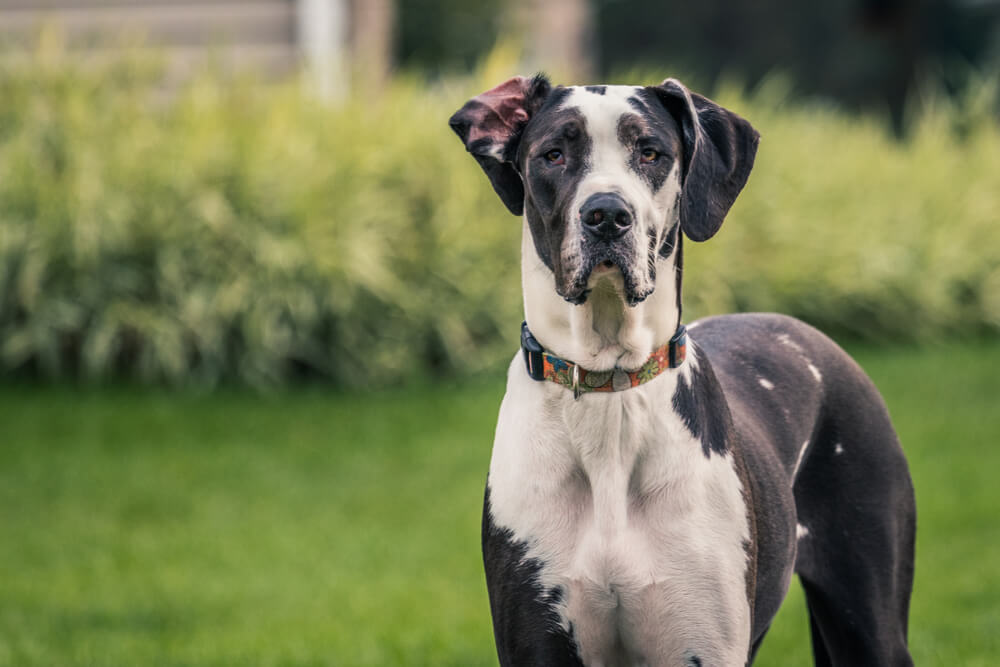
The Great Dane is known for its colossal size, which can make it dangerous if the dog feels scared or threatened. However, when properly socialized, this breed is typically a large and gentle companion.
Despite its name, the Great Dane is actually a German breed and does not originate from Denmark. These impressive dogs stand over 30 inches tall, towering over many other breeds often labeled as “dangerous,” such as Dobermans and German Shepherds.
When a Great Dane stands on its hind legs, it can easily be taller than most humans. Weighing around 180 pounds, their sheer size means that if they act aggressively, they can be challenging to control, even for responsible owners who usually manage their behavior well.
One distinctive feature of Great Danes is their ears, which naturally fold over. Some owners choose to crop their dog’s ears for aesthetic reasons.
According to the American Kennel Club, the Great Dane ranks as the fourteenth most popular dog breed in the U.S. Despite concerns about their potential for aggression, the breed’s popularity continues to grow, as many people embrace them as family pets.
Most Great Dane owners report that their dogs are good-natured, laid-back, and intelligent. However, it’s essential to recognize that these gentle giants can also be protective and territorial—traits that can lead to problems given their size and strength.
Akitas: Loyal Protectors with a Potential for Aggression
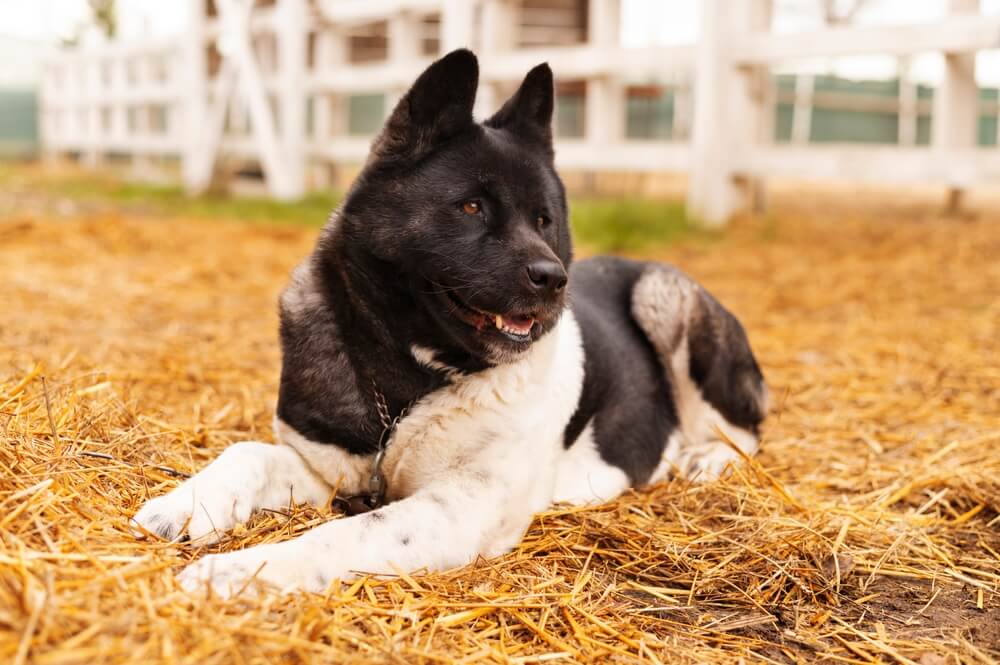
The Akita is a large dog breed that hails from Japan, renowned for its loyalty and protective nature towards its owners. However, they can also display aggression toward strangers. Due to their strength, an attack from an Akita can have devastating consequences.
One of the most concerning features of the Akita is its scissor-shaped jaw, which gives it an exceptionally powerful bite. Once an Akita has bitten down, it can be nearly impossible to open its mouth until it chooses to release. This characteristic can lead to severe injuries for victims of an attack.
Another factor to consider is the Akita’s high prey drive. This breed has a natural instinct to chase and catch smaller animals, which can make them unpredictable around other pets or even children. It is essential to provide proper training and supervision to help manage their instincts effectively.
In Indiana, certain towns have enacted ordinances regarding potentially dangerous dog breeds, including the Akita. For instance, in Schererville, Pit Bulls are banned from dog parks, while other cities have identified various breeds, including Akitas, as dangerous. The town of Greenville has specific restrictions for breeds like Akitas, Chow Chows, Doberman Pinschers, Rottweilers, and Wolf Hybrids.
This demonstrates that Indiana takes dog bite incidents seriously, emphasizing the importance of responsible ownership and training.
Conclusion
In conclusion, understanding the characteristics and behaviors of the most dangerous dog breeds is crucial for current and prospective pet owners. While many of these breeds may have a reputation for aggression, it’s important to remember that behavior is largely influenced by training, socialization, and individual temperament. Responsible ownership, including proper training and socialization, can significantly mitigate risks and ensure a safe environment for both the dog and the community. Always approach dog ownership with care and consideration, and prioritize education about the breeds you may encounter. By doing so, you can make informed decisions that contribute to safer interactions between dogs and people, ultimately fostering a more harmonious relationship within our communities.
Tag : DangerousDogBreeds, #MostDangerousDogs, #DogSafety, #AggressiveDogBreeds, #DogBehavior, #PetSafetyTips, #HighRiskDogBreeds, #UnderstandingDogAggression, #DogBreedInformation, #HowToChooseADog, #DogOwnershipTips, #RiskyDogBreeds, #CanineBehavior, #DogTraining, #ResponsiblePetOwnership, #DogLovers, #PetCare, #DogHealth, #DogFighting, #DogRescue, #PetBehavior, #DogOwnerAdvice, #SafePets, #TrainingTips, #BreedSpecificLegislation, #FamilyPets, #DogMyths, #DogSocialization, #DogEducation, #PetInsurance, #DogAdoption

